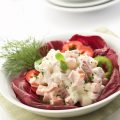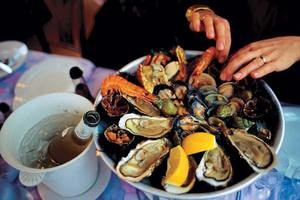 Gratin recipe Up to the 16th century concept"French cuisine" and "gourmet cooking" had nothing in common. Fatty, overcooked or overfried food, the lack of taste of which was compensated by a huge number of all kinds of spices, was suitable only for mechanically stuffing stomachs. Everything changed after Catherine de Medici ascended the royal throne. The Florentine not only taught her subjects to wash their hands before eating and use cutlery, but also brought with her the most skilled Italian chefs, who managed to radically change the French idea of taste. Moreover, in a short time, the students surpassed their teachers. The culinary ingenuity dormant in them unfolded in full. Thanks to them, the words "garnish", "omelette", "sauce", "mayonnaise", "soufflé", "restaurant" turned out to be international. And many dishes, despite the fact that they owed their origin to a completely different country, began to be associated exclusively with France. This is what happened, for example, with shellfish dishes. Conduct an experiment yourself: what first comes to mind when you hear the word "oysters"? Of course, France. But the idea of using them in cooking and the method of transporting them in aquariums belongs to the ancient Romans. (There is reason to believe, however, that the Chinese were also engaged in shellfish in the 4th century BC.) It is also worth noting that modern French and English oyster farms are located on former Roman territories - in Cancale (France) and Colchester (the former capital of Roman Britain). Even today, oyster feasts are held here every October, with the local Colchester variety (Ostrea Edulis) being eaten.
Gratin recipe Up to the 16th century concept"French cuisine" and "gourmet cooking" had nothing in common. Fatty, overcooked or overfried food, the lack of taste of which was compensated by a huge number of all kinds of spices, was suitable only for mechanically stuffing stomachs. Everything changed after Catherine de Medici ascended the royal throne. The Florentine not only taught her subjects to wash their hands before eating and use cutlery, but also brought with her the most skilled Italian chefs, who managed to radically change the French idea of taste. Moreover, in a short time, the students surpassed their teachers. The culinary ingenuity dormant in them unfolded in full. Thanks to them, the words "garnish", "omelette", "sauce", "mayonnaise", "soufflé", "restaurant" turned out to be international. And many dishes, despite the fact that they owed their origin to a completely different country, began to be associated exclusively with France. This is what happened, for example, with shellfish dishes. Conduct an experiment yourself: what first comes to mind when you hear the word "oysters"? Of course, France. But the idea of using them in cooking and the method of transporting them in aquariums belongs to the ancient Romans. (There is reason to believe, however, that the Chinese were also engaged in shellfish in the 4th century BC.) It is also worth noting that modern French and English oyster farms are located on former Roman territories - in Cancale (France) and Colchester (the former capital of Roman Britain). Even today, oyster feasts are held here every October, with the local Colchester variety (Ostrea Edulis) being eaten. Snails were also one of the Romans' favorite dishes.They grew them in cochlear (snail) gardens, fattened them up for a long time on coarse flour and "watered" them with wine. After all, the thicker the snail, the tastier it is. There is a well-known historical fact: when Caesar brought troops into Gaul, his numerous legionnaires ate almost nothing but snails. Many years later, this happened again. Napoleon Bonaparte ordered that his troops be given "emergency supplies" of these slippery creatures. As for frogs, the second culinary "emblem" of France, the history of their use in French cuisine is largely reminiscent of the history of oysters. Burgundy snailsTo prepare classic "Burgundy snails", (Escargotе a’ la bourguignonne) First prepare the "Escargot butter" (beurre d’escargots)Ingredients:
Snails were also one of the Romans' favorite dishes.They grew them in cochlear (snail) gardens, fattened them up for a long time on coarse flour and "watered" them with wine. After all, the thicker the snail, the tastier it is. There is a well-known historical fact: when Caesar brought troops into Gaul, his numerous legionnaires ate almost nothing but snails. Many years later, this happened again. Napoleon Bonaparte ordered that his troops be given "emergency supplies" of these slippery creatures. As for frogs, the second culinary "emblem" of France, the history of their use in French cuisine is largely reminiscent of the history of oysters. Burgundy snailsTo prepare classic "Burgundy snails", (Escargotе a’ la bourguignonne) First prepare the "Escargot butter" (beurre d’escargots)Ingredients:
- 1 kilogram of butter
- 25 grams of salt
- 5 grams of black pepper
- 150 grams of garlic
- 35 grams of shallot or green onions
- 90 grams of parsley
Method of preparation:Grind everything or chop very finely and mix. Then put some "escargot butter" (that is, snail butter) into the empty shell. Then return the snail to the shell. Add butter so that it completely covers the snail, to the edges of the shell - about 5 grams for each. Preheat the oven, put the snails in there and keep until the butter melts. Serve immediately on special plates and with a small fork. Cocktail with seafood So, mollusks, which are part of the diet of many peoples, prepared by culinary masters of France, acquire the status of a "masterpiece". "Mussels gratin", "Bucho mussels" and, of course, "mucled" Mussels cooked in white wine with thyme, garlic, cloves and leeks are a gift for a true gourmet. But the top line of the gastronomic parade is still occupied by a special type of mollusks - oysters. These primitive creatures were the subject of paintings by the Flemings Clara Peeters and Frans Snyders, and were painted by John Singer Sargent and Edouard Manet. There was a time when no French feast was complete without oysters, and one guest could eat as many as six dozen without violating etiquette or earning the title of a special glutton. In the 18th century, rich people baked them in pies, stuffed poultry with them, especially turkeys, which were also served with oyster sauce, and added them to pork or lamb. But pickled oysters were considered poor people's food in both France and England, replacing meat. Thus, Dickens's character "Sam Weller" says: "Oysters and poverty always seem to go hand in hand." However, such a plentiful "feast" did not last long: unlimited oyster consumption, as expected, led to their sharp decline in the wild. And then France began to introduce various laws on the preservation of "national wealth". From April to the end of October, shellfish fishing was prohibited, and violators were subject to fines. But despite all this, in the 1830s and 1840s, Cancale fishermen continued to sell 50-70 million European oysters a year. By the early 1860s, this figure had dropped to 1-2 million, but not because demand had fallen, they had simply become virtually extinct. Emperor Napoleon III of France even had to sign a decree allowing oysters to be imported from Britain. It was from this time that they ceased to be a cheap, affordable food for ordinary people, finally becoming a delicacy with all the ensuing consequences.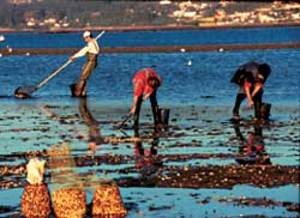 So what's so special about them?It turns out that, despite their high nutritional status, oysters are rich in vital substances: zinc, iron, calcium, vitamin A. At the same time, they have a low energy value - about 110 calories per dozen. (Note to those watching their figure.) As for the taste itself, it depends on the cooking method, which, in turn, depends on the chef's imagination. Just imagine: oysters are even added to cocktails! But true connoisseurs and gourmets eat them raw. Purists even insist that they should not be poured with any sauce. Perhaps, to enhance the taste, you can squeeze out a few drops of lemon, vinegar or "Tabasco" - the main thing is not to overdo it, since it is important to feel and enjoy the salty "breath" of the ocean. Raw oysters can be compared to wine, in that they have a complex flavor that varies greatly depending on the type and habitat. They are also named after the place where they are caught. Experts believe that each region, and even each oyster bank, has its own character and flavor profile. The main thing that affects the quality of oysters is the environmental conditions in which they grow: from the composition of minerals and salts in the water to the temperature of the water and the food of the oysters. Some have a sweet taste, others are salty, sometimes you can feel a mineral (slightly metallic) taste, and sometimes - like fresh melon. Their tissue or texture is soft and fleshy, but nevertheless slightly elastic. You can eat raw oysters only in months that have the letter "AB" in their name, since in the northern hemisphere the summer months are "April". spawning season, and it is believed that mollusks lose their taste during this period. Their meat becomes watery and bland. This cannot be said, for example, about Mexican oysters, which reproduce all year round and are tasty both raw and cooked. You can experience all the richness of taste only if the oysters are fresh. That is, alive. It is not difficult to determine this: the shell must be tightly closed. (Open ones are most likely already dead, and it is dangerous to eat them.) In order to be completely sure of this, you need to lightly knock on the valve. A live mollusk will quickly slam the "door". And it happens that even closed shells contain a dead mollusk. You can also check this by knocking on the shell: if you hear a peculiar dull echo, then everything is in order. Also keep in mind: to open a live oyster, you need some experience, since on land it tightly closes its "house" with a very strong muscle. This requires skills and tools. The most common way to do this is with an oyster knife, which has a short thick blade about 5 cm long. It should be inserted from the back, near the lock of the shell, then move the knife upwards, slightly moving your wrist, and thus cut the muscle of the mollusk. (Inexperienced "shell crackers" sometimes press too hard and often injure themselves if the shell suddenly jumps out of their hands.)
So what's so special about them?It turns out that, despite their high nutritional status, oysters are rich in vital substances: zinc, iron, calcium, vitamin A. At the same time, they have a low energy value - about 110 calories per dozen. (Note to those watching their figure.) As for the taste itself, it depends on the cooking method, which, in turn, depends on the chef's imagination. Just imagine: oysters are even added to cocktails! But true connoisseurs and gourmets eat them raw. Purists even insist that they should not be poured with any sauce. Perhaps, to enhance the taste, you can squeeze out a few drops of lemon, vinegar or "Tabasco" - the main thing is not to overdo it, since it is important to feel and enjoy the salty "breath" of the ocean. Raw oysters can be compared to wine, in that they have a complex flavor that varies greatly depending on the type and habitat. They are also named after the place where they are caught. Experts believe that each region, and even each oyster bank, has its own character and flavor profile. The main thing that affects the quality of oysters is the environmental conditions in which they grow: from the composition of minerals and salts in the water to the temperature of the water and the food of the oysters. Some have a sweet taste, others are salty, sometimes you can feel a mineral (slightly metallic) taste, and sometimes - like fresh melon. Their tissue or texture is soft and fleshy, but nevertheless slightly elastic. You can eat raw oysters only in months that have the letter "AB" in their name, since in the northern hemisphere the summer months are "April". spawning season, and it is believed that mollusks lose their taste during this period. Their meat becomes watery and bland. This cannot be said, for example, about Mexican oysters, which reproduce all year round and are tasty both raw and cooked. You can experience all the richness of taste only if the oysters are fresh. That is, alive. It is not difficult to determine this: the shell must be tightly closed. (Open ones are most likely already dead, and it is dangerous to eat them.) In order to be completely sure of this, you need to lightly knock on the valve. A live mollusk will quickly slam the "door". And it happens that even closed shells contain a dead mollusk. You can also check this by knocking on the shell: if you hear a peculiar dull echo, then everything is in order. Also keep in mind: to open a live oyster, you need some experience, since on land it tightly closes its "house" with a very strong muscle. This requires skills and tools. The most common way to do this is with an oyster knife, which has a short thick blade about 5 cm long. It should be inserted from the back, near the lock of the shell, then move the knife upwards, slightly moving your wrist, and thus cut the muscle of the mollusk. (Inexperienced "shell crackers" sometimes press too hard and often injure themselves if the shell suddenly jumps out of their hands.)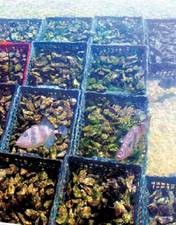 Oysters Rockefeller In Paris «brasserie»(beer restaurants) - there are many. In almost all of them you can order a dozen European or any other oysters, depending on the time of year, and eat them without leaving the bar. Before they bring you a tray with pieces of ice and nesting mollusks, they will definitely discuss the taste of the oysters you ordered with you and offer you a glass of the wine that goes best with them. Classic options - champagne, oaky Chardonnay, Alsatian varieties. But in general, "pairing", that is, combining wine with oysters, is done by professionals who publish their lists - "versions of pairings" every season. So every year you can expect new sensations. Now about the price. Oysters - an expensive pleasure, especially in those regions where they are not grown. So, "Oysters Rockefeller", one of the most expensive and famous dishes in the world, is the signature dish of the oldest restaurant in America "Antoine's". It was created by the first owner of the restaurant Jules Alcitore. By the way, there are two opinions about the name of the dish in honor of Rockefeller. The first - the sauce is as "rich" as Rockefeller. And the second - the color of the shellfish due to the various added spices and herbs is green. And green, as you know, is the color of the mighty "greenback", the American dollar. The recipe for "Oysters Rockefeller" is kept secret, but professionals consider something similar to be close to the original. Ingredients:
Oysters Rockefeller In Paris «brasserie»(beer restaurants) - there are many. In almost all of them you can order a dozen European or any other oysters, depending on the time of year, and eat them without leaving the bar. Before they bring you a tray with pieces of ice and nesting mollusks, they will definitely discuss the taste of the oysters you ordered with you and offer you a glass of the wine that goes best with them. Classic options - champagne, oaky Chardonnay, Alsatian varieties. But in general, "pairing", that is, combining wine with oysters, is done by professionals who publish their lists - "versions of pairings" every season. So every year you can expect new sensations. Now about the price. Oysters - an expensive pleasure, especially in those regions where they are not grown. So, "Oysters Rockefeller", one of the most expensive and famous dishes in the world, is the signature dish of the oldest restaurant in America "Antoine's". It was created by the first owner of the restaurant Jules Alcitore. By the way, there are two opinions about the name of the dish in honor of Rockefeller. The first - the sauce is as "rich" as Rockefeller. And the second - the color of the shellfish due to the various added spices and herbs is green. And green, as you know, is the color of the mighty "greenback", the American dollar. The recipe for "Oysters Rockefeller" is kept secret, but professionals consider something similar to be close to the original. Ingredients:
- 24 fresh oysters, 24 fold
- 4 parsley stalks
- 4 green onion stalks
- Celery leaf handful
- Not less than 6 leaves of tarragon
- Not less than 6 leaves of Chervil
- 120 g French bread crumbs
- 170 g unsalted butter
- Salt and pepper to taste
- 2 tablespoons Pernod or Tabasco (optional)
- Large salt
Method of preparation:Finely chop the herbs and grind them with the breadcrumbs and room temperature butter in a mortar until they form a smooth paste (you can also use a food processor). Season with salt, pepper and add Pernod or Tabasco, if you like. Heat the grill. Sprinkle the pan with coarse salt (to prevent the oysters from wobbling). Lightly moisten the salt. Place the shells on the salt so that the liquid does not overflow. Place one oyster on each shell. Spoon the prepared paste onto each oyster. Cook until the edges of the oysters rise upward and the butter begins to bubble. This takes about 5 minutes. The main thing is not to overcook them. "Everything that comes from France simply has to be exquisite!" said Marie-Antoine Carême, the famous French chef who served Talleyrand, George IV and Rothschild. And it's hard to disagree. After all, even such an unusual dish as frog legs leaves an impression not so much of exotic food as of refinement. The French themselves simply adore devouring greenish amphibians. Moreover, lovers of the tender meat similar to chicken have united in clubs and associations, and in the city of Vittel, as is known, annual international frog fairs are held. Frogs are still loved in the historical homeland of their culinary use - China. They can also be seen on the menu of restaurants in England, where they were first brought and prepared by the "chef of emperors and Emperor of chefs" Auguste Escoffier at the turn of the 19th and 20th centuries. His dish, made especially for the Prince of Wales, was called "Cuisses de nymphes", which literally translates as "Nymphs' Legs". Today, even the French do not have enough of their own frogs, and most of them are supplied from Indonesia, Bangladesh, Myanmar. Until recently - until 1982, India also sold frogs. They banned their export from there because with the decrease in the number of amphibians, agricultural pests have multiplied incredibly, the losses from which are many times greater than the income from French orders.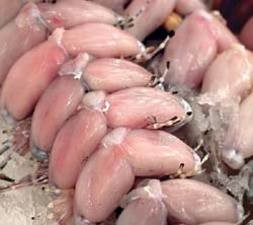 Official statistics show that every yearФранция «съедает» около 3—4 тысяч тонн лягушачьих окорочков. Это примерно 60—80 миллионов лягушек. Учитывая общее народонаселение страны, на одного француза приходится не так уж много лягушачьего мяса. Стоимость деликатеса варьируется от 6 до 10 евро за килограмм. В самом деле, ограниченные возможности поставок привели к тому, что лягушек в меню французских ресторанов теперь немного. Чаще их готовят дома. Мясо жарят во фритюре или панировочных сухарях. Оно — низкокалорийное и содержит массу полезных веществ: фосфор, кальций, железо, а по питательной ценности сравнимо с мясом мидий и устриц. Более популярны и «массовы» — улитки. Поклонники этого деликатеса называют их сухопутными кузенами моллюсков. Съедобные брюхоногие моллюски бывают разных размеров, от 2 миллиметров до африканского гиганта, иногда достигающего 312 миллиметров, но наиболее часто в кулинарии используются улитки двух видов: «маленькая серая» и «римская» или «бургундская». Первые — местные жители средиземноморского побережья, а также северных берегов Испании, Франции и Британских островов, куда их привезли римляне. Вторая разновидность водится во многих европейских странах. Эти существа живут в лесистых горах и долинах, питаются виноградными листьями и молодой травой, отчего их и называют «виноградными». Особенно ценными считаются улитки бургундских и шампанских виноградников. Правильнее всего есть улиток в ноябре, тогда они самые откормленные. Хотя перед приготовлением их все же заставляют голодать, но делается это для того, чтобы вывести из их организма шлаки и токсины. А вот с ноября по апрель они находятся в спячке, и когда просыпаются, им снова требуется время, чтобы набрать вес. Поэтому для гурманов в этот период они интереса не представляют. Улитки, которые в ресторанных меню называются исключительно «эскарго», подаются во многих традиционных французских ресторанах. Но, если вы решили попробовать это блюдо в первый раз, лучше всего выбрать заведение, где готовят по классическим рецептам. Например, L’Escargot, на улице Монторгей, открытое в Париже еще в 1875 году. После длительной дискуссии о вине, которое лучше всего выявит землистое послевкусие этого деликатеса, и еще более длительного ожидания вам принесут тарелку с шестью улитками, залитыми зеленым соусом. Классический рецепт призывает вынуть обитательницу из своего домика, почистить внутренности, приготовить в сливочном масле, огромнейшем количестве чеснока и мелкорубленой петрушки. Потом вернуть ее обратно в домик и выложить на специальное блюдо с углублениями. Если вы захотите «соорудить» это блюдо дома, то вам понадобятся живые виноградные улитки, обрабатывать которые придется как минимум неделю. Сначала держать в деревянном ящике (ни в коем случае не в пластике, низ должен продуваться) впроголодь. Потом их нужно промыть под проточной водой и как следует высушить (дня три). Далее уложить рядами в большой сосуд, посыпая каждый слой улиток крупной солью. Они начнут сильно пениться, извергая то, что осталось у них внутри. Есть и другой способ. Держа улиток трое суток в деревянном ящике, промывать их под струей воды каждый вечер. Причем ящик ставить как минимум в сантиметрах 15 от земли, чтобы они не могли питаться. Впрочем, в первые день–два улиток можно кормить укропом, который улучшит их вкус. Потом высушить тоже дня три. После сушки и просола улиток кладут в кипяток и варят 3—4 минуты. Затем их достают из ракушки, мясо кладут в соленую холодную воду на 15 минут. Далее еще раз тщательно промывают. Теперь они готовы к приготовлению или замораживанию впрок.
Official statistics show that every yearФранция «съедает» около 3—4 тысяч тонн лягушачьих окорочков. Это примерно 60—80 миллионов лягушек. Учитывая общее народонаселение страны, на одного француза приходится не так уж много лягушачьего мяса. Стоимость деликатеса варьируется от 6 до 10 евро за килограмм. В самом деле, ограниченные возможности поставок привели к тому, что лягушек в меню французских ресторанов теперь немного. Чаще их готовят дома. Мясо жарят во фритюре или панировочных сухарях. Оно — низкокалорийное и содержит массу полезных веществ: фосфор, кальций, железо, а по питательной ценности сравнимо с мясом мидий и устриц. Более популярны и «массовы» — улитки. Поклонники этого деликатеса называют их сухопутными кузенами моллюсков. Съедобные брюхоногие моллюски бывают разных размеров, от 2 миллиметров до африканского гиганта, иногда достигающего 312 миллиметров, но наиболее часто в кулинарии используются улитки двух видов: «маленькая серая» и «римская» или «бургундская». Первые — местные жители средиземноморского побережья, а также северных берегов Испании, Франции и Британских островов, куда их привезли римляне. Вторая разновидность водится во многих европейских странах. Эти существа живут в лесистых горах и долинах, питаются виноградными листьями и молодой травой, отчего их и называют «виноградными». Особенно ценными считаются улитки бургундских и шампанских виноградников. Правильнее всего есть улиток в ноябре, тогда они самые откормленные. Хотя перед приготовлением их все же заставляют голодать, но делается это для того, чтобы вывести из их организма шлаки и токсины. А вот с ноября по апрель они находятся в спячке, и когда просыпаются, им снова требуется время, чтобы набрать вес. Поэтому для гурманов в этот период они интереса не представляют. Улитки, которые в ресторанных меню называются исключительно «эскарго», подаются во многих традиционных французских ресторанах. Но, если вы решили попробовать это блюдо в первый раз, лучше всего выбрать заведение, где готовят по классическим рецептам. Например, L’Escargot, на улице Монторгей, открытое в Париже еще в 1875 году. После длительной дискуссии о вине, которое лучше всего выявит землистое послевкусие этого деликатеса, и еще более длительного ожидания вам принесут тарелку с шестью улитками, залитыми зеленым соусом. Классический рецепт призывает вынуть обитательницу из своего домика, почистить внутренности, приготовить в сливочном масле, огромнейшем количестве чеснока и мелкорубленой петрушки. Потом вернуть ее обратно в домик и выложить на специальное блюдо с углублениями. Если вы захотите «соорудить» это блюдо дома, то вам понадобятся живые виноградные улитки, обрабатывать которые придется как минимум неделю. Сначала держать в деревянном ящике (ни в коем случае не в пластике, низ должен продуваться) впроголодь. Потом их нужно промыть под проточной водой и как следует высушить (дня три). Далее уложить рядами в большой сосуд, посыпая каждый слой улиток крупной солью. Они начнут сильно пениться, извергая то, что осталось у них внутри. Есть и другой способ. Держа улиток трое суток в деревянном ящике, промывать их под струей воды каждый вечер. Причем ящик ставить как минимум в сантиметрах 15 от земли, чтобы они не могли питаться. Впрочем, в первые день–два улиток можно кормить укропом, который улучшит их вкус. Потом высушить тоже дня три. После сушки и просола улиток кладут в кипяток и варят 3—4 минуты. Затем их достают из ракушки, мясо кладут в соленую холодную воду на 15 минут. Далее еще раз тщательно промывают. Теперь они готовы к приготовлению или замораживанию впрок. 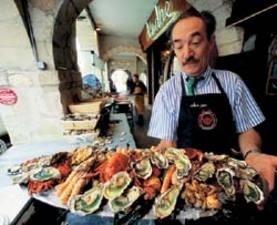 Traditionally, snail meat is boiled in cort broth— 1/2 liter of white wine per 1 liter of water, where they add parsley, bay leaf, thyme, onion, shallot, garlic, salt, pepper, cloves and other spices to taste, such as mint or anise or even carrots (everything is taken by eye, since it depends on the chef's preferences). Snails are put into the court broth and cooked over low heat after boiling for 60 to 90 minutes. Such a long preparatory process makes escargot a festive dish. It is especially in demand in France at Christmas and New Year, and about 600 million are eaten per year, while world consumption is about 100 thousand tons. «Delicious food and wine, this is paradise on earth», — Henry IV once frankly admitted. Probably, the modern French have inherited a similar view from their cheerful king. Otherwise, why do they manage to popularize their cuisine so skillfully and find millions of admirers for their strangest dishes? Frog legs with sour cream This is a very simple recipe, the preparation of which will take a little time, but it will certainly amaze your guests. Ingredients:
Traditionally, snail meat is boiled in cort broth— 1/2 liter of white wine per 1 liter of water, where they add parsley, bay leaf, thyme, onion, shallot, garlic, salt, pepper, cloves and other spices to taste, such as mint or anise or even carrots (everything is taken by eye, since it depends on the chef's preferences). Snails are put into the court broth and cooked over low heat after boiling for 60 to 90 minutes. Such a long preparatory process makes escargot a festive dish. It is especially in demand in France at Christmas and New Year, and about 600 million are eaten per year, while world consumption is about 100 thousand tons. «Delicious food and wine, this is paradise on earth», — Henry IV once frankly admitted. Probably, the modern French have inherited a similar view from their cheerful king. Otherwise, why do they manage to popularize their cuisine so skillfully and find millions of admirers for their strangest dishes? Frog legs with sour cream This is a very simple recipe, the preparation of which will take a little time, but it will certainly amaze your guests. Ingredients:
- 24 frog legs
- 2 pieces of shallots (can be replaced with 1 onion bulb)
- 4 tablespoons vegetable oil
- 250 g sour cream flour, salt, pepper
Cooking method: First you need to thoroughly wash the frog legs in a stream of cold water, dry them with a napkin and sprinkle with flour. Then chop the onion and lightly spasse in a griddle with half the oil. After 5 minutes, put the frog legs, let them fry on one side. Add the remaining butter, turn the chicken legs over so that they are fried on the other side (3 minutes), salt and pepper. Add sour cream and fry for another 3 minutes. You can add seasonings to taste, such as parsley, thyme, garlic. After that, put on a preheated dish and serve.




